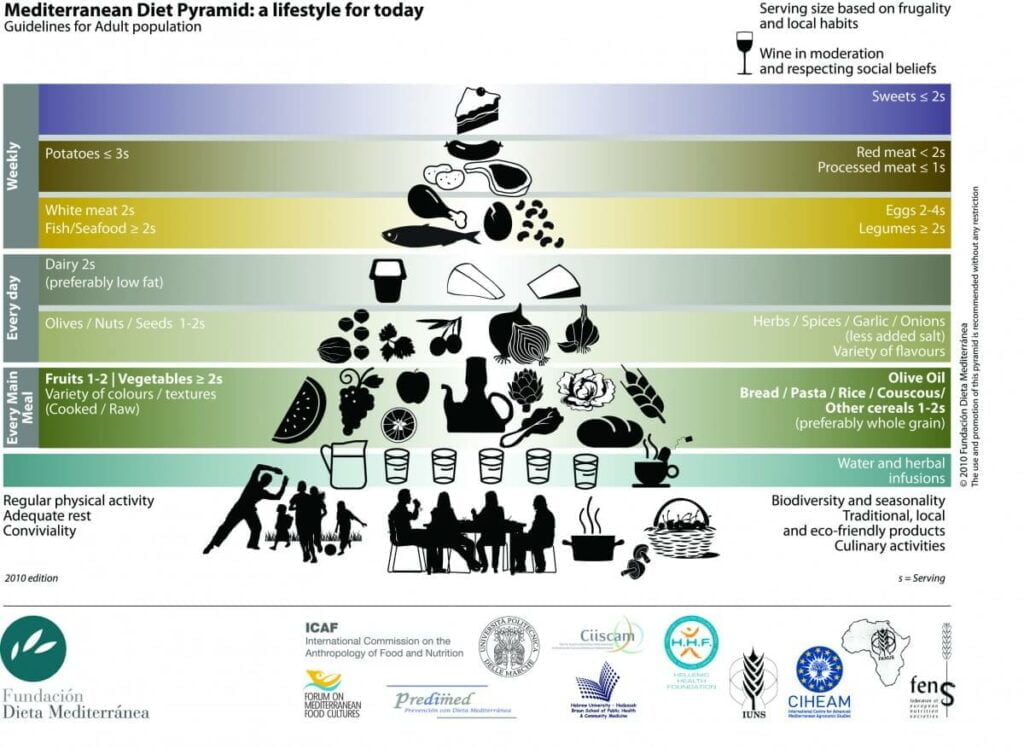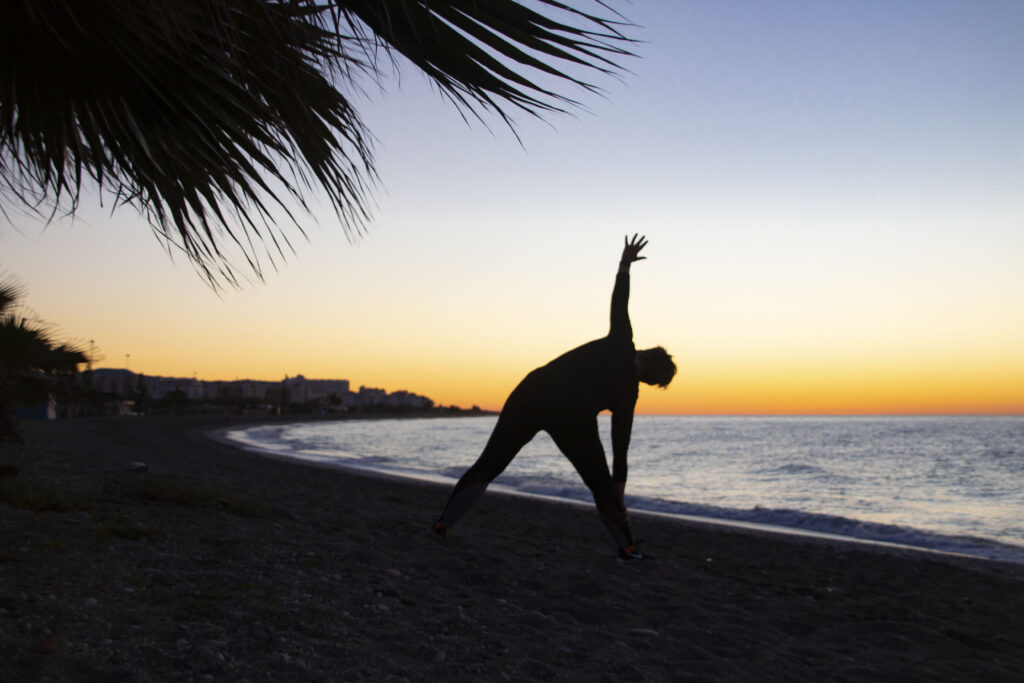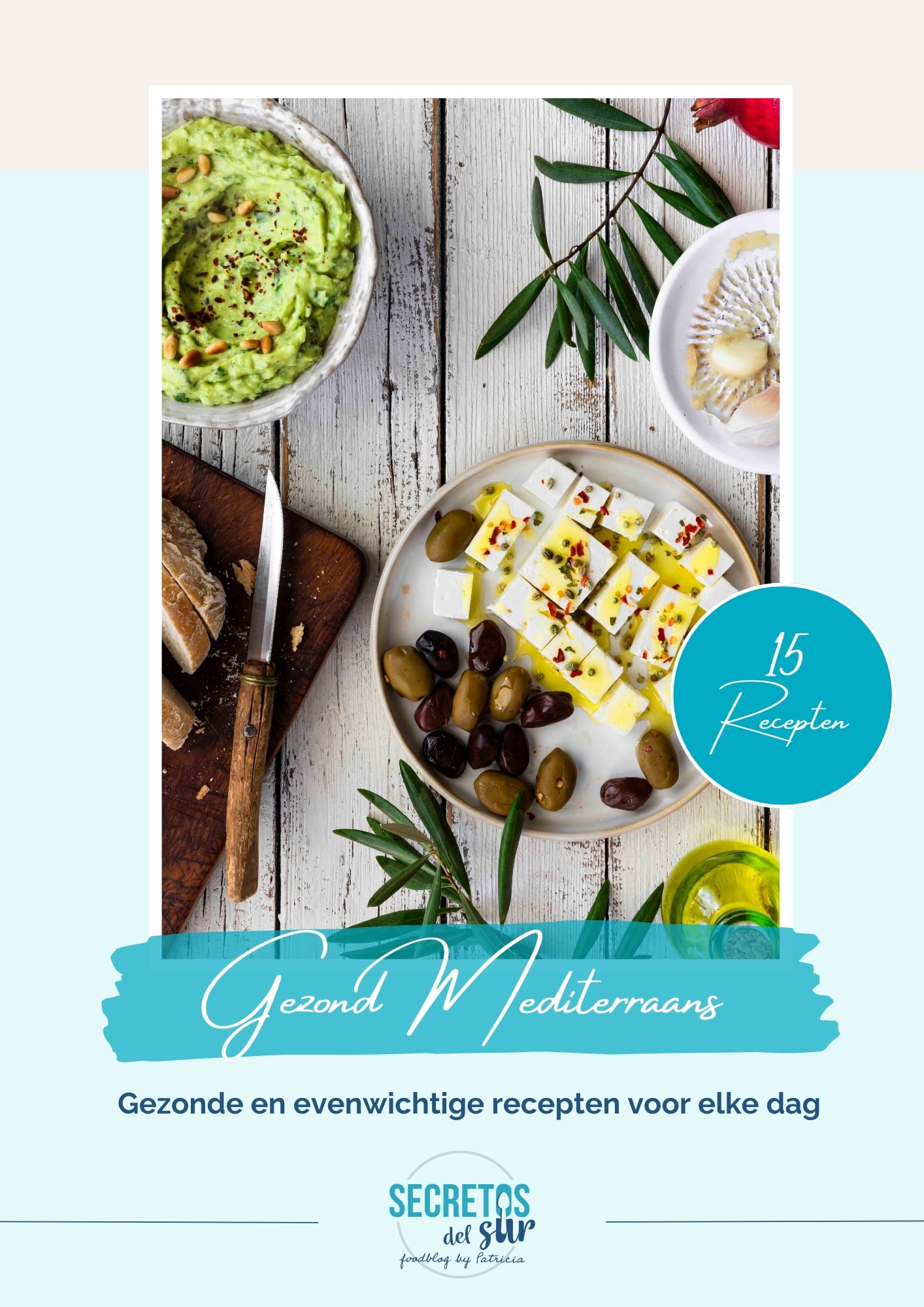The mediterranean “diet”
In 2010, the “Mediterranean diet” was recognized by UNESCO as an intangible heritage of humanity!
Unfortunately, this Mediterranean dietary pattern is already facing some serious pressure…
Indeed, the word “diet” means “rule of life” or “lifestyle”, so has a much broader meaning than simply “going on a diet”.
In the sixties a study was made of the countries around the Mediterranean, it having been noticed that people there grew older in a healthier way. Fewer cardiovascular problems, less diabetes and inflammatory diseases.
Paradoxically however, nowadays most obese Europeans are inhabitants of those countries where traditionally people ate the healthiest, ie the Mediterranean. In Greece, as much as 75% of the population is obese, with the European average being 50%. The cuisine of their ancestors is now a “poor man’s” cuisine.
According to researchers, the inhabitants of the Mediterranean countries are diverging more and more from the path of their grandparents. Due to the economic crisis, young people tend to go for the cheapest food, and that quite often means a pizza or burger… Whereas traditionnally mothers did not go out working but made sure they had some healthy food at home; nowadays they too are short of time. As a consequence, there will be more “quick-and-easy” food on the table.
As I have previously pointed out, the Mediterranean diet is based on a “poor” cuisine with a very simple preparation of fresh products. That is precisely what makes it so “rich”! The lack of refrigerators and freezers, and temperatures of up to 40 ° C and more meant that the women went shopping for food on a daily basis. People living in the mountains often made a “guiso”, this is a broth of fresh vegetables which on the first day was eaten as a soup; the second day rice was added; and the third day, meat. Unfortunately many of these traditions were lost.
Because of their geographic location, these southern regions mainly depend on fishing, cereal crops and olive trees and not least … wine growing. Cereal crops provided the base of the food pyramid as the main source of carbohydrates, followed by olive oil as the main source of fats, and fruits and vegetables as a source of dietary fibre. Proteins came from fish, eggs and dairy products.
Here in Spain, as of 1990-2000, eating meat has become more like a symbol of wealth. Compared to the sixties, people now consume up to three times as much meat and less than half the legumes such as lentils and chickpeas. Suddenly meat has become affordable. At the same time there is also a marked decrease in physical activity such as working in the fields. The rise of bread and fast food has caused traditions to be replaced by “modern times”.
(sources:
- Predimed-date el gusto de comer sano; Ana Sanchez-Tainta, Beatriz San Julian; Miguel Angel Martinez Gonzalez.
- optimaal gezond zonder medicijnen; Dr.Rudy Proesmans)
A few basic properties of the Mediterranean diet:
A prominent feature of the Mediterranean food pyramid is its base.

Dagelijks:
– Physical activity, min. 45 minutes
– Enjoying one’s meal
– Sufficient hours of sleep
– Drink water and tea
– Min. 2 portions of vegetables (60% of lunch and 60% of dinner)
– Legumes (lentils, chickpeas, beans,…)
– 2-3 Portions of fruit
– 1-2 Portions (handfuls) of cereal products
– Fats (olive oil, lineseed oil, …)
– Nuts/ seeds (max. 1 handful)
– Max. 2 portions of dairy products (low fat)
– Max. 1 glass of red wine
– Use olive oil as source of fat– Preferably enjoy your meals in company (family, friends, collegues,…)
Wekelijks:
– Max. 2 portions of white meat
– Max. 1 portion of red meat
– Min. 2 portions of fish
– 2-4 eggs
– Min. 2 portions of legumes
– Max. 3 portions of potatoes
– Max. 2 portions of sweets
EXAMPLE OF A DAY’S MEDITERRANEAN MENU:
Breakfast
- Bruschetta with freshly pureed tomato, feta cheese and olive oil
- Fresh fruit
- 1 Cup of tea or coffee
Lunch
- Chickpea and vegetable soup
- Fillet of gilt-head bream with fennel and couscous
- Pineapple
Dinner
- Vegetable omelette with a salad
- 1 glass of red wine
- Yoghurt
Snacks
- A handful of nuts
- Fruit
- Sufficient water
I’m in no way claiming that this is the sanctifying diet that everyone should follow. Particularly important for me is not to omit anything from the diet, to have a very varied diet, and to stick to portions. If it says a slice of bread, it does not say half a loaf. And if it says couscous it means 2-3 tablespoons of it, not more.
Determining my portions used to be a problem. My parents taught me to finish my plate. As a result I ate more than I really needed. I was convinced that it was rude not to finish one’s plate. Nothing is less true! You really should learn to listen to your body and distinguish between gluttony and hunger.
In Spain, the food is placed in the middle of the table and everyone eats small portions of different dishes. Company and conversation make you feel satisfied more quickly. This tapas culture brings with it that as a guest you lose track of all the things you ate. Therefore, it’s very important to be aware of what you eat. I will always order an extra tomato salad and make sure that it stays close to me. The chips I will gladly pass on to the other end of the table.
The Andalusian food culture has influenced my lifestyle. In the morning for example, the whole family eats fresh fruit. That means that we eat 8-10 pieces of fruit every day. Dinner consists for 80% of vegetables and legumes. There is not enough space in my fridge for that much fruit and vegetables so I now go shopping two to three times a week. The more fresh products you use, the less you feel like buying anything which is canned or ready-made, let alone eating it.
Beweging:
Ga op zoek naar wat je kan volhouden… waar je je goed bij voelt.

AN EXAMPLE OF A DAY’S MENU IN MY FAMILY:
Breakfast
- My husband (♥) cuts a mix of different kinds of fruit in a bowl (grapes, raspberries, pear….), and I add 2 Tbsp of oats and 150 ml almond milk. Don’t start your day by using sweets because than your body will ask for more during the rest of the day.
- 1 cup of coffee or tea
Lunch
- 1 Bowl of fresh made vegetable soup with a slice of bread.
- A salad with tomato, avocado, onion, lentils and chicken.
- Mandarin
- 1 koffie / thee
Dinner
- Trout with spinach and broccoli quenelle
- 1 yoghurt
- 1 glass of wine
Snacks
- Fruit
- 1 Handful of nuts
- Sufficient water
For dinner, I try to combine fish / meat / egg or cheese with vegetables only. Carbohydrates are mainly restricted to lunch. I limit bread, pasta and potatoes because I feel better that way. If I do use them i will choose whole wheat pasta / bread or quinoa.
Spotify playlist
Een etentje met vrienden of famillie? Zorg voor extra zuiderse sfeer en beluister mijn -SECRETOS DEL SUR- Spotify list” (dank aan DJ Beatz voor de finetuning)

